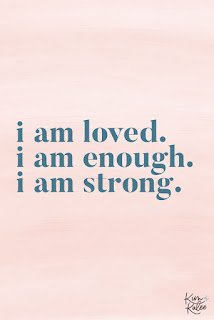Massage therapy as an effective treatment
for back pain
Whether you’ve strained a back muscle in the garden, by playing golf, or by playing with our children, or if your back pain stems from a long term injury, you’re not alone. Figures indicate that the overwhelming majority of people will endure back pain at one point or another.
Most low back pain doesn’t last long, and lasts a few days to a few
weeks. While it can be very disruptive to your normal day to day
activities, It tends to heal by itself without any long term damage.
Most cases of this type of low back pain are mechanical in nature,
meaning that the components of the back (the spine, muscle, discs, and
nerves) aren’t working together properly because one or more are injured
or traumatized.
What Causes Back Pain?
Back pain is debilitating because each movement of your body
requires the spine to function smoothly. When back pain exists, the
problem is complicated and multiplied by compensating in ways that avoid
the pain. It’s common for sufferers of back pain to have secondary
problems related to the movements they’re making due to back pain.
But
what’s the cause of most back pain? Unfortunately, given the required
cooperation and involvement of the muscular, nervous and skeletal
systems, there are many possibilities.
Here are some of the most common:
- Poor posture accounts for, or contributes to, back pain in a staggering number of people. Whether it’s due to wearing high heels, or a less than ideal position in front of a computer screen, on the phone or driving, the result is stress on the back as it attempts to compensate for the unusual loads placed on it.
- Sprains and strains account for most acute back pain. Sprains are caused by overstretching or tearing ligaments, and strains are tears in tendon or muscle. Both can occur from twisting or lifting something improperly, lifting something too heavy, or overstretching. Such movements may also trigger spasms in back muscles, which can also be painful.
- Intervertebral disc degeneration is one of the most common mechanical causes of low back pain, and it occurs when the usually rubbery discs lose integrity as a normal process of aging. In a healthy back, intervertebral discs provide height and allow bending, flexion, and torsion of the lower back. As the discs deteriorate, they lose their ability to cushion movements and shocks.
- Herniated or ruptured discs can occur when the intervertebral discs become compressed and bulge outward (herniation) or rupture, causing low back pain.
- Radiculopathy is a condition caused by compression, inflammation and/or injury to a spinal nerve root. Pressure on the nerve root results in pain, numbness, or a tingling sensation that travels or radiates to other areas of the body that are served by that nerve. Radiculopathy may occur when spinal stenosis or a herniated or ruptured disc compresses the nerve root.
- Sciatica is a form of radiculopathy caused by compression of the sciatic nerve, the large nerve that travels through the buttocks and extends down the back of the leg. This compression causes shock-like or burning low back pain combined with pain through the buttocks and down one leg, occasionally reaching the foot.
- A traumatic injury, such as from playing sports, car accidents, or a fall can injure tendons, ligaments or muscle resulting in low back pain. Traumatic injury may also cause the spine to become overly compressed, which in turn can cause an intervertebral disc to rupture or herniate, exerting pressure on any of the nerves rooted to the spinal cord. When spinal nerves become compressed and irritated, back pain and sciatica may result.
- Skeletal irregularities include scoliosis, a curvature of the spine that does not usually cause pain until middle age; lordosis, an abnormally accentuated arch in the lower back; and other congenital anomalies of the spine.
Not to be trivialized, poor posture, such as that while sitting,
can lead directly to a number of painful issues, including back pain.
If you spend a significant amount of time slouching over a keyboard, the
shoulders roll forward and move up, and the back tightens to support
the bent over posture. Perform a little self diagnoses as you’re reading
this. If you’re like most, you’re not sitting in an optimal position.
In
addition to poor posture, a lack of exercise, arthritis, osteoporosis, a
sedentary lifestyle, overuse, pregnancy, kidney stones, fibromyalgia,
excess weight, and more can also cause back pain.
Massage Therapy Offers Relief for Back Pain
Those who live with back pain know that many times there are no easy
answers for making the pain go away. Alternative therapies such as
physical therapy have proven effective for some sufferers, as have
chiropractic and acupuncture, but massage therapy is also making a name
for itself when it comes to providing relief. In fact, research has
shown that massage can be a great friend to the back-pain sufferer.
How
effective massage therapy for back pain is depends on the primary cause
of the pain. If it is primarily muscular in nature, then massage can
have a great positive impact on muscle tightness and muscle spasms. If
it’s caused by a joint alignment issue or one of the skelatal issues
listed above, then the role of massage might be somewhat different, such
as helping to address the biomechanical imbalances that make things
worse, but massage won’t be able to get pressure off the nerve directly.










